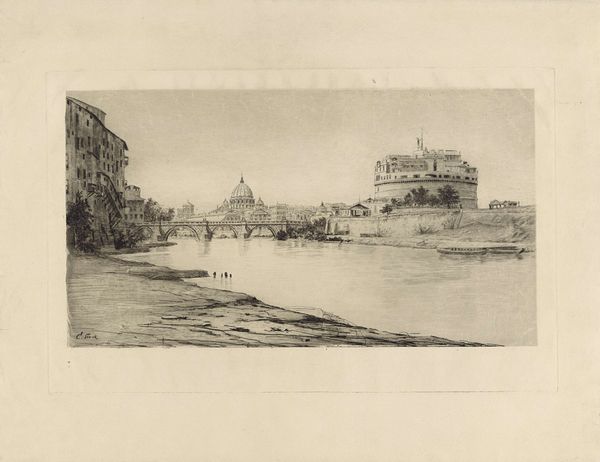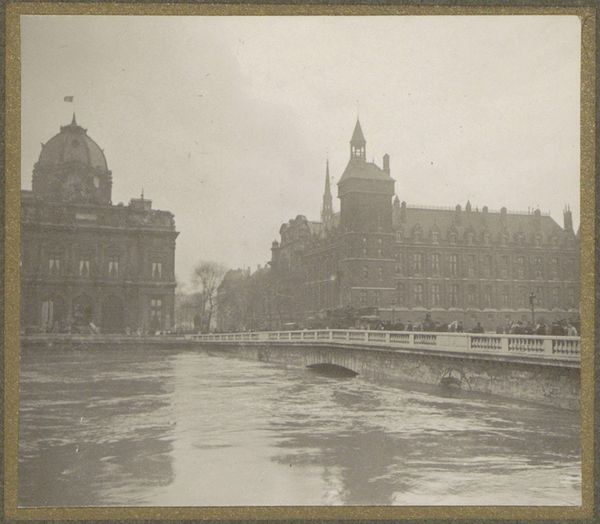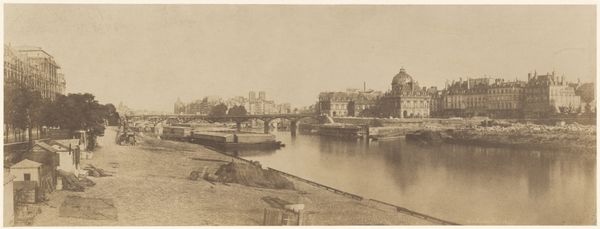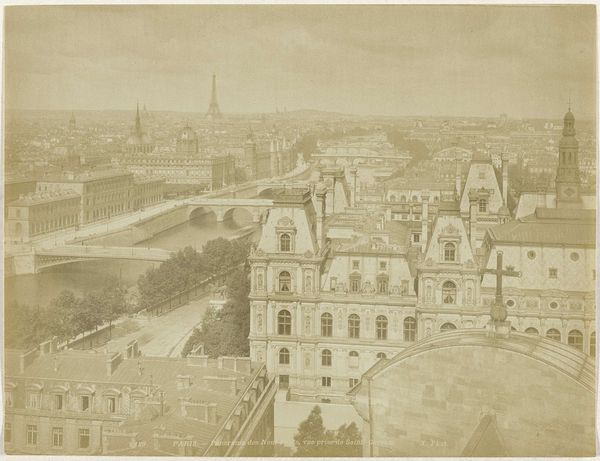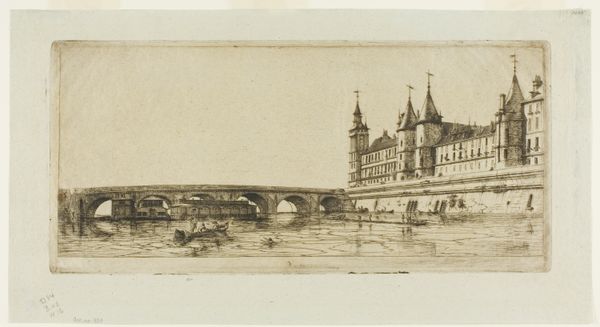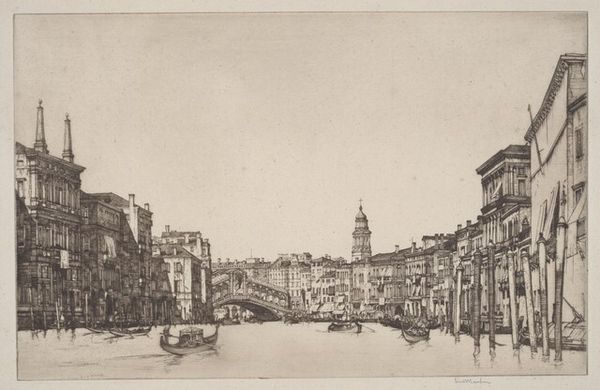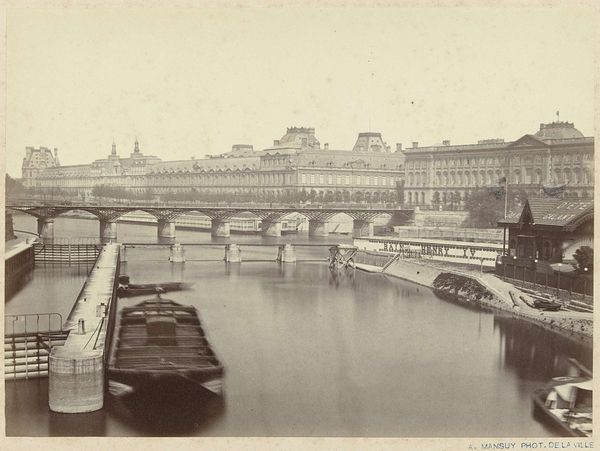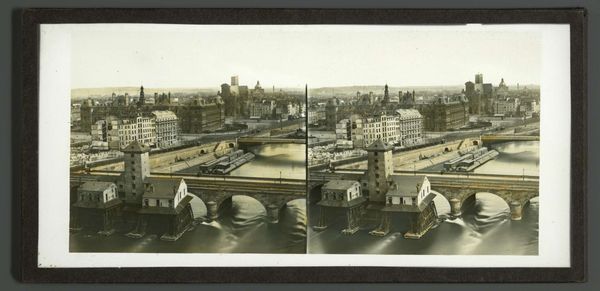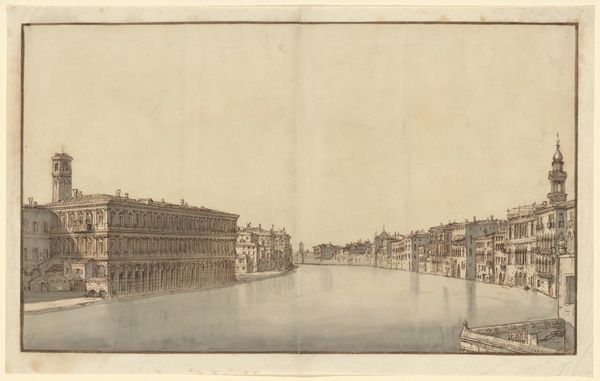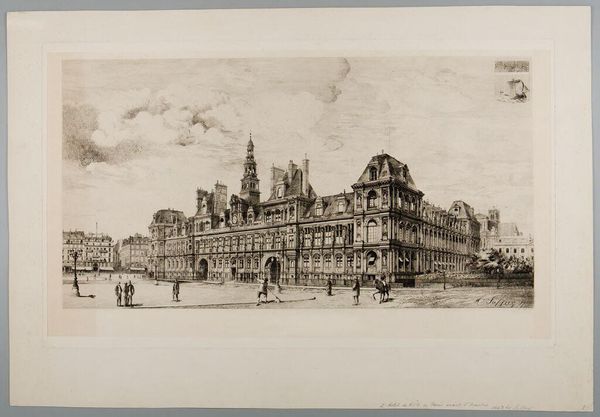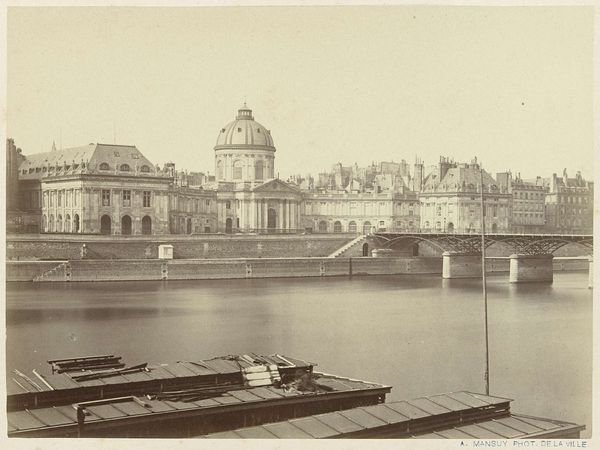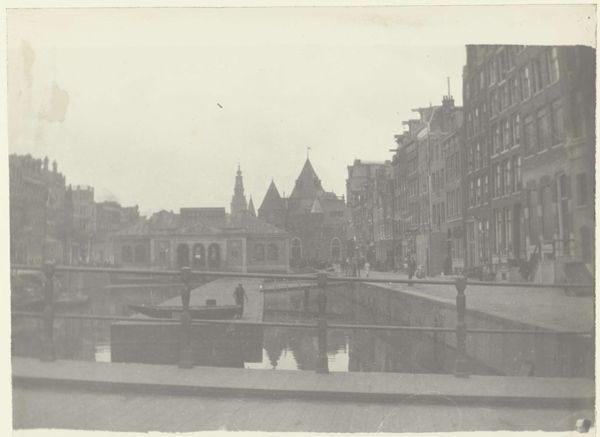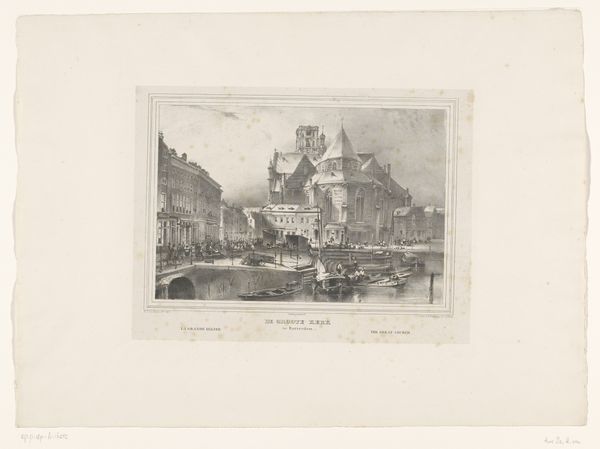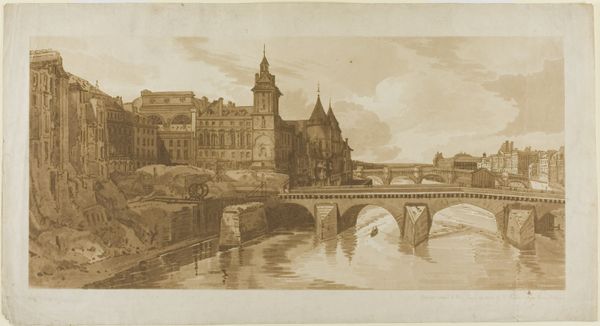
The Entrance to the Grand Canal, with the Dogana da Mar and Santa Maria della Salute on the Left 1733 - 1740
0:00
0:00
drawing, pencil
#
drawing
#
venetian-painting
#
pencil sketch
#
landscape
#
charcoal drawing
#
pencil drawing
#
pencil
#
cityscape
#
building
Dimensions: 10 x 16 15/16 in. (25.4 x 43 cm)
Copyright: Public Domain
Curator: Ah, yes. Here we have "The Entrance to the Grand Canal, with the Dogana da Mar and Santa Maria della Salute on the Left," a pencil drawing by Bernardo Bellotto, created sometime between 1733 and 1740. Editor: It's incredibly still, isn’t it? Like a monochrome dream. The water, the sky – everything holds its breath. I wonder what time of day it is. Early morning, perhaps? Before Venice truly wakes up and roars to life? Curator: It offers a fascinating glimpse into eighteenth-century Venice. Beyond just architectural documentation, Bellotto provides a socio-political commentary by choosing this particular viewpoint. By highlighting the Dogana da Mar, the former customs house, and the Santa Maria della Salute, built in thanks for deliverance from the plague, Bellotto subtly references Venice's dependence on trade and its deeply entwined relationship with religious faith amidst times of crisis. Editor: Hmm, I see what you mean. For me, the stark contrast between the delicate lines of the architecture and the vast expanse of water… it evokes a feeling of isolation, almost. Makes you think about Venice being this jewel of human creation adrift on a wild, untamed sea. And I bet the air, even then, had that salty tang. Curator: Interesting! The emptiness is certainly striking. I see it, rather, as a carefully constructed portrait of power. Bellotto deliberately frames these key institutions—the church representing spiritual authority and the customs house, economic dominance—to illustrate Venice's established social order. The rendering shows how the urban layout mirrored and reinforced these hierarchies. It reflects not only a physical space, but also an ideological one. Editor: And isn't it all just rendered so precisely, considering the scale? The detail he gets with what I assume is just pencil or charcoal is impressive. I find myself drawn to those little boats—invisible unless you zoom in really closely. Imagine how cramped, how filled with daily dramas they would have been. Those micro-narratives all contributing to Venice's larger story. Curator: Absolutely. Now, consider how his choice of medium itself contributes to meaning. Pencil allowed for portability and efficiency. Such works likely served as preparatory sketches for large-scale paintings, revealing the commodification of landscape and cityscape imagery during the period. Editor: Oh, I hadn't thought about its practical purpose like that, that makes so much sense! Makes me appreciate its inherent immediacy a bit more. The drawing becomes a snapshot of process and also something wonderfully vulnerable, you know? All its structural bones showing beneath the surface of what became a glorious painting. Curator: Indeed, it’s through such an analysis of technique, subject, and context that we gain a fuller appreciation. Editor: So much more than just a pretty view, then. Thanks for the reminder to really look, really feel the weight of history in what seems simple.
Comments
No comments
Be the first to comment and join the conversation on the ultimate creative platform.
